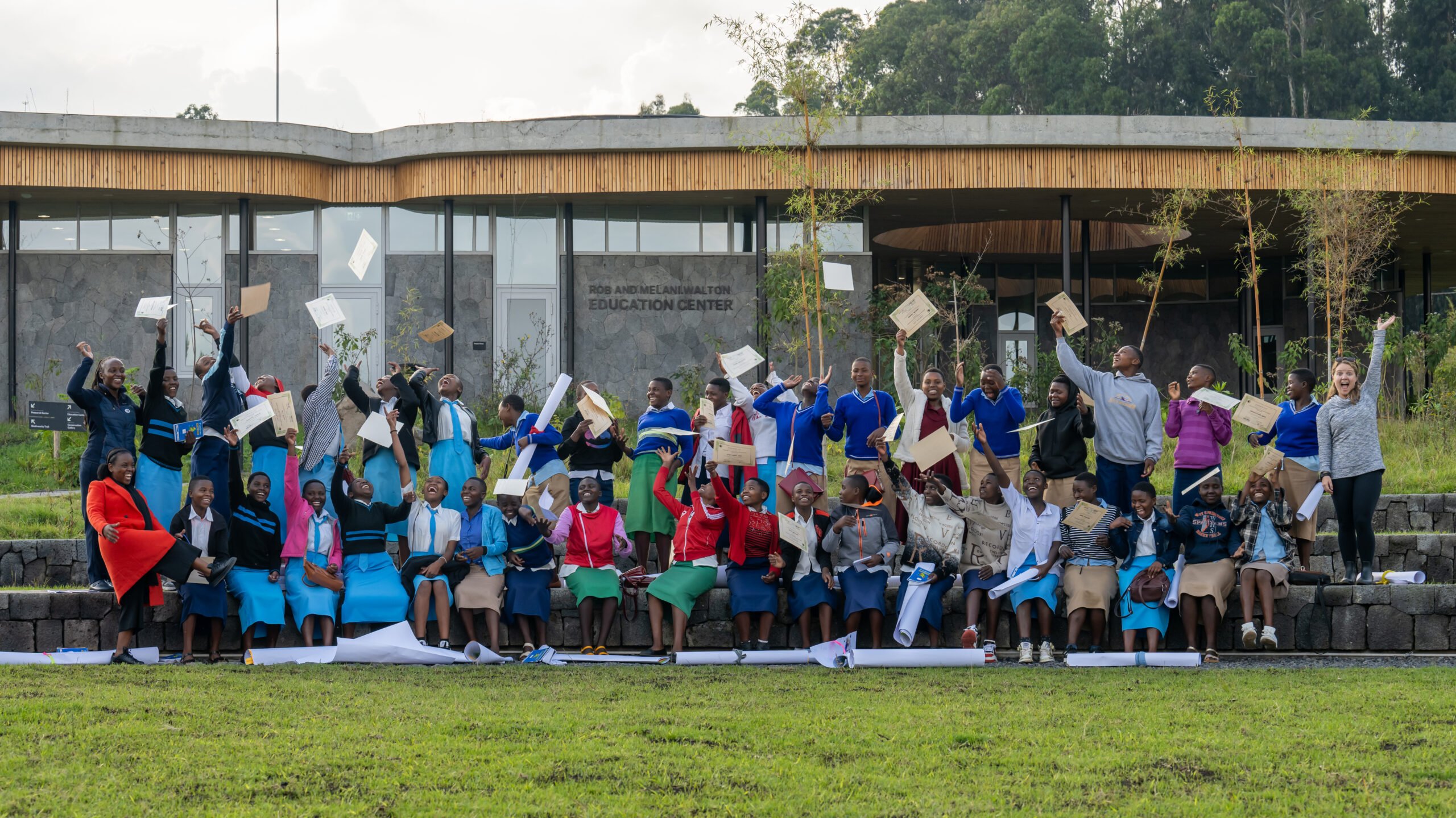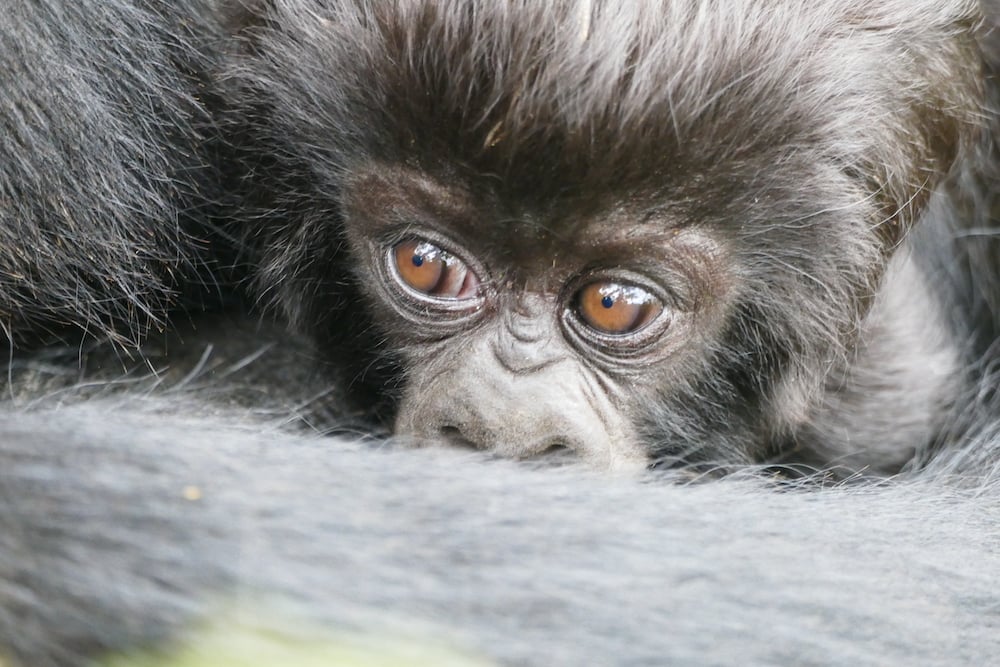Every year on World Gorilla Day, we spend time with our youngest conservationists, and this year was no exception. In fact, this year was even more special than usual — it was the fifth anniversary celebration of World Gorilla Day, which began in 2017 to coincide with the 50th anniversary of the day Dian Fossey set up two tents in the forest and founded the Karisoke Research Center.
Since that first World Gorilla Day in 2017, we’ve never missed a day in the forest protecting individual gorillas and their families. In addition, our teams have removed 4,881 snares from the forests of Rwanda and the DRC, and none of the gorillas in the groups we monitor have been injured or killed by a snare. We’ve helped tens of thousands of people through our livelihood, education and food and water security programs, reducing human reliance on the forests and protecting the biodiverse gorilla habitat. We’ve collaborated with scientists from around the world to publish more than 60 scientific papers on gorillas and larger biodiversity issues. But one our favorite activities involves educating the next generation of conservationists: the children of Rwanda and the DRC.

On September 23, Conservation Education Coordinator Maurice Ngiramahoro and Conservation Education Assistant Elias Nizeyimana traveled to Nyabirehe secondary school to talk to 20 nature club members about the importance of protecting the mountain gorillas that live in nearby Volcanoes National Park.
The group was then joined by four artists from the Rigobert Outdoor Gallery in Musanze — Eric Ndinayo, Christian Nsinzi, Andy Bayingana and Loic Dushimimana — who taught the students how to draw a gorilla.
Students learned not just how to sketch a gorilla, but how they can help protect the endangered mountain gorillas that live in the nearby forest.
“It is important to include children in gorilla conservation from a young age and let them know that mountain gorillas need a home and food to survive, just as kids themselves need,” said Ngiramahoro. “The future of gorilla conservation lies in the hands of these young children. They are the next generation of scientists and conservationists, and it is an honor to work with them.”






